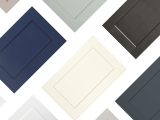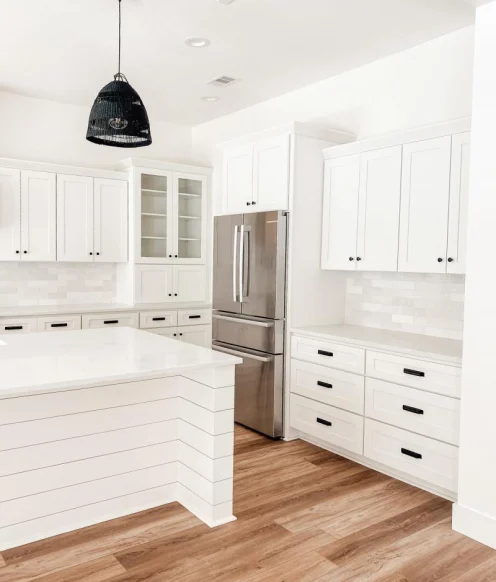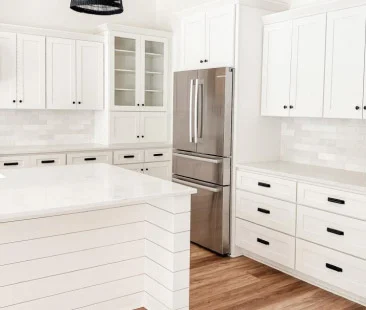In one of our most recent posts, we gave beginner’s tips on how to measure a kitchen for new cabinetry. These tips focused on measuring the kitchen itself, with the assumption that all cabinets would be swapped out.
This time, we’ll cover cabinet measurements themselves, in case you need them, perhaps to replace a single section of cabinets. More importantly, it will give you a better sense of how cabinets are measured and talked about, which will help you narrow down your choices as you choose which beautiful RTA kitchen cabinets will soon join your home!
Types of Cabinet Facing
The space a cabinet will fill is a pretty straightforward thing. It has a width, a depth, and a height. However, the height can be adjusted a little with shims and toe kicks, and the end cabinet may or may not include a decorative façade, usually an oversized door permanently affixed.
The cabinets themselves vary primarily on what’s called the cabinet’s facing style, and when you’re looking at new cabinets, or trying to match an old one closely, you’ll need to understand those. There are two major styles, and we’ll cover each briefly.
Face Frame Cabinets
In the United States, cabinets are traditionally built with what’s called a face frame. These are probably the cabinets you grew up with, with an inch and a half wide frame around the sides, top, and bottom of each cabinet. The door hinges attach to the face frame, which can provide more options and adjustability. Face frame cabinets are a good choice because they provide several inches of wood to screw into, when connecting cabinets to each other, and can thus make for a sturdier overall construction.
The disadvantage is that the frame restricts access to the full width of the cabinet, so large items may simply not be able to get through the door, even if they’d fit inside. In addition, in wider cabinets, a center stile often runs down the middle, where the doors meet, further restricting access.
Face frame cabinets offer more flexibility in look and feel, however. Since there are broad, finished frames, doors can be anywhere from barely overlapping the frame, called “standard overlay” for a very traditional look and feel. They can also overlay more completely, almost touching for a tighter “full overlay” aesthetic, or you can even get doors that are inset into the frame and flush with it, for a sleek look with dramatic shadows and lines.
To measure them is a bit more complex, as you’ll need to measure the width of the frame (individually, not two together in side-by-side cabinets), center stiles, and the width of the doors to get the offset down.
Frameless Cabinets
In Europe, frameless cabinets have been the most popular standard for decades, and they’re starting to slowly gain popularity in the U.S. as well. Rather than a frame around the opening of the cabinet, these cabinets rely on attaching the side panels directly to each other.
The advantage of frameless cabinets is that you have full access to the interior space, with no narrower opening to maneuver larger objects through. Wider double cabinets usually do not have a center stile, offering far greater flexibility in the storage of extremely wide objects like cookie trays, sheet pans, and serving dishes.
Drawers also tend to be larger, because the space that would normally be taken up by the frame, can instead be used as useful storage space.
Measuring them is a snap! Just measure the widths from outside to outside of the frame, and the height to the bottom of the counter, or from top to bottom for wall cabinets, and that’s it!
The main drawback is that the frameless style, while sleek and modern, is inflexible. Since there are no frames or stiles, the doors have to basically touch each other, usually with less than 1/64th of an inch of clearance. This makes a very flat, sleek “wall of doors” look, but that’s the only look available, since anything else would leave gaps into the interior of the cabinets. Hinge design is also a little more restricted, as they have to be affixed to the side panels directly, and must open in such a way that they don’t interfere with the other, very tightly spaced doors.
Between the stylistic restrictions, and the lower durability of frameless cabinets, at RTA Cabinet Store, we primarily carry face frame cabinets, though in a wide variety of styles and overlays, from full overlay to inset. Check out what we have to offer, and we guarantee you’ll find a style that will work for your new kitchen!










